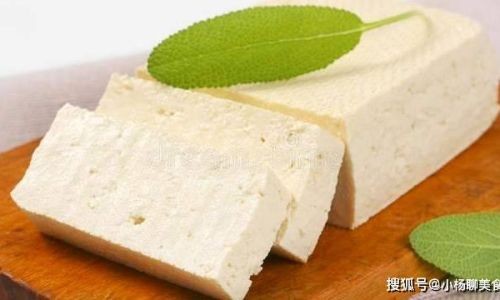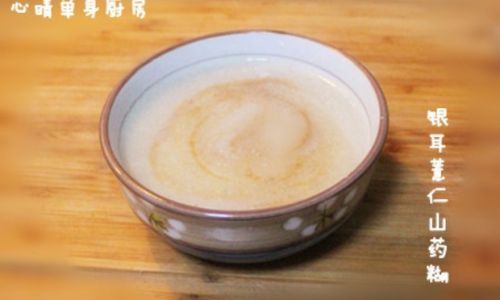Introduction
Tofu, derived from soybeans, is a versatile and nutritious food staple enjoyed worldwide for its mild flavor, high protein content, and adaptability to various culinary preparations. Whether it’s silken, soft, firm, or extra-firm, tofu can be a cornerstone of vegetarian dishes, a protein boost in stir-fries, or even the base for creamy desserts. However, one common challenge faced by tofu enthusiasts is how to maintain its freshness, especially when you find yourself with leftover tofu that you don’t intend to consume immediately. Fresh tofu has a relatively short shelf life, and improper storage can lead to spoilage, characterized by an off odor, discoloration, and a change in texture. In this comprehensive guide, we will explore various methods for preserving fresh tofu, ensuring it stays in optimal condition for as long as possible.

Understanding Tofu Freshness
Before diving into preservation techniques, it’s crucial to understand what constitutes fresh tofu and the signs of spoilage. Fresh tofu should have a smooth, firm (depending on its type), and slightly moist texture. Its color can range from white to a light beige, with a subtle, slightly sweet, and bean-like aroma. As tofu ages, it begins to lose moisture, leading to a drier, more crumbly texture. Microbial activity can also cause off odors and discoloration, such as yellowing or darkening.
Immediate Use and Storage Considerations
The first step in preserving tofu is to handle it properly from the moment you purchase or make it. Here are some initial considerations:
-
Proper Packaging: If you buy tofu from a store, keep it in its original packaging until you’re ready to use it. This packaging is often designed to maintain freshness.
-
Refrigeration: Always store tofu in the refrigerator, preferably in the coldest part, which is usually the bottom shelf. Cold temperatures slow down microbial growth and dehydration.
-
Avoid Contamination: Handle tofu with clean utensils and ensure it doesn’t come into contact with raw meats or other potentially contaminated foods.
Water Submersion Method
One of the simplest and most effective ways to keep tofu fresh is by submerging it in water. This method works well for all types of tofu but is particularly beneficial for firm and extra-firm varieties, which are less prone to disintegration in water.
Steps:
-
Prepare the Water: Use clean, fresh water. Tap water is generally fine, but if you’re concerned about impurities or chlorine taste, you can use filtered or bottled water.
-
Submerge the Tofu: Place the tofu block in a container large enough to fully submerge it. Pour enough water to cover the tofu completely.
-
Change the Water Daily: To prevent bacterial growth, change the water daily. This ensures that the tofu stays in a clean, fresh environment.
-
Seal the Container: If possible, use an airtight container or cover the tofu-water bath with a lid. This minimizes exposure to oxygen and potential contaminants.
Benefits and Drawbacks:
- Benefits: This method is straightforward, requires minimal effort, and is highly effective in maintaining tofu’s texture and flavor.
- Drawbacks: It can be somewhat inconvenient, especially if you need to remember to change the water daily. Additionally, it requires additional storage space.
Freezing Tofu
For longer-term preservation, freezing tofu is an excellent option. While freezing does alter the texture slightly, making it more dense and chewy, it’s perfect for dishes where the tofu’s original texture isn’t crucial, such as soups, stews, or blended preparations.
Steps:
-
Wrap the Tofu: Wrap the tofu block tightly in plastic wrap or place it in a freezer-safe container. Ensure there are no gaps where ice crystals can form and cause freezer burn.
-
Label and Date: Mark the package with the date so you know how long it’s been frozen.
-
Place in the Freezer: Store the wrapped tofu in the freezer.

Thawing and Use:
- Thawing: To thaw frozen tofu, place it in the refrigerator overnight. Alternatively, you can thaw it under cold running water or in a bowl of cold water, changing the water periodically until it’s fully thawed.
- Pressing: Once thawed, you may need to press the tofu to remove excess moisture. This can be done using a tofu press or by placing the block between two clean kitchen towels or paper towels and applying gentle pressure.
Benefits and Drawbacks:
- Benefits: Freezing extends tofu’s shelf life significantly, making it a great option for bulk buying or when you have excess tofu.
- Drawbacks: The texture change may not be suitable for all recipes. Additionally, thawed tofu can be more prone to breaking apart during handling.
Vacuum Sealing
Vacuum sealing is a sophisticated method of preserving tofu that removes oxygen from the packaging, thereby slowing down oxidation and microbial growth. This method is particularly effective for long-term storage and is ideal for those who frequently buy tofu in bulk.
Steps:
-
Prepare the Tofu: Ensure the tofu is dry on the surface to avoid moisture build-up inside the vacuum-sealed bag.
-
Vacuum Seal: Place the tofu in a vacuum-sealable bag and remove as much air as possible using a vacuum sealer.
-
Store in the Refrigerator or Freezer: Depending on how long you want to store the tofu, you can keep it in the refrigerator for a few weeks or in the freezer for several months.
Benefits and Drawbacks:
- Benefits: Vacuum sealing provides an almost airtight environment, significantly extending tofu’s shelf life and preserving its quality.
- Drawbacks: This method requires a vacuum sealer, which can be an additional cost. Additionally, once the package is opened, the tofu should be consumed promptly.
Modified Atmosphere Packaging (MAP)
Modified atmosphere packaging involves replacing the air in the packaging with a gas mixture that slows down spoilage. While this method is more commonly used in commercial settings, some home kitchen gadgets now offer MAP capabilities.
Steps (if using a home MAP device):
-
Prepare the Tofu: As with vacuum sealing, ensure the tofu is dry.
-
Place in MAP Bag: Use a bag designed for MAP and insert the tofu.
-
Seal and Flush: Follow the device’s instructions to remove the air and replace it with the protective gas mixture.
-
Store: Store the sealed tofu in the refrigerator or freezer.
Benefits and Drawbacks:
- Benefits: MAP can significantly extend tofu’s shelf life and maintain its quality, similar to vacuum sealing.
- Drawbacks: Requires specialized equipment, which may not be accessible to all home cooks.
Conclusion
Preserving fresh tofu doesn’t have to be a challenge. By understanding the basic principles of freshness and employing effective storage techniques such as water submersion, freezing, vacuum sealing, and modified atmosphere packaging, you can ensure your tofu stays in optimal condition for extended periods. Each method has its own benefits and drawbacks, so choose the one that best suits your needs, whether it’s convenience, texture preservation, or long-term storage. With these techniques, you can enjoy the versatility and nutrition of tofu without worrying about spoilage, making it a staple in your kitchen for both everyday meals and special occasions.




0 comments